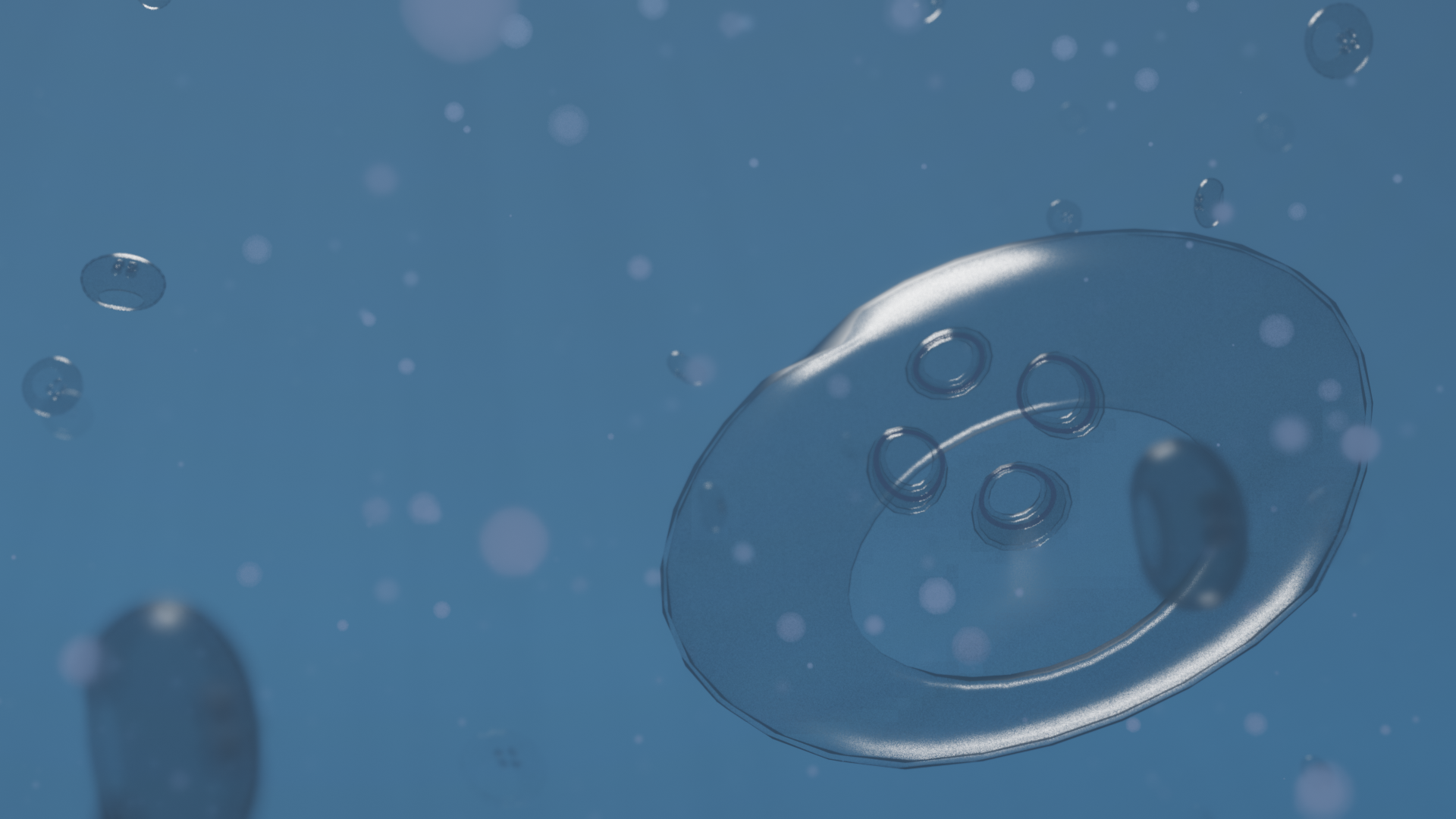Vattenkropp
Name means: Water Body
They are, in essence, floating sheets that form into a bell of sorts. The insides of this bell are, as one might expect, composed of water, hence the name. Digestible particles are absorbed into the organism's thin membrane through several channels dotted on their outer surface. The particles will then be broken down by enzymes when inside the Vattenkropp. Waste created through this process will be expelled through the organism's inner surface, which ensures that the creature does not waste energy on digesting indigestible compounds and also provides slight forward propulsion. At the top of their bells lay several gonads of either male or female sex. Whenever resources are abundant, Vattenkropps will begin synthesising gametes of their respective sex. They will then compress sacks just behind the gonads, thus forcing the water outwards along with the sex cells. This lowers the chances of the potential offspring being accidentally eaten by their parents, as well as providing greater access to the currents above. Whether it is being propelled out of the water or simply failing, most gametes will not be fertilized. Instead, they will join the majority as marine snow to be eaten by other organisms. The few that do manage to form a zygote will develop quickly for the conditions to do so never last long. Once the individual has finally matured, it will either wait until favorable conditions come, or if it lives in a volatile environment, as soon as possible release its own gametes.
They are, in essence, floating sheets that form into a bell of sorts. The insides of this bell are, as one might expect, composed of water, hence the name. Digestible particles are absorbed into the organism's thin membrane through several channels dotted on their outer surface. The particles will then be broken down by enzymes when inside the Vattenkropp. Waste created through this process will be expelled through the organism's inner surface, which ensures that the creature does not waste energy on digesting indigestible compounds and also provides slight forward propulsion. At the top of their bells lay several gonads of either male or female sex. Whenever resources are abundant, Vattenkropps will begin synthesising gametes of their respective sex. They will then compress sacks just behind the gonads, thus forcing the water outwards along with the sex cells. This lowers the chances of the potential offspring being accidentally eaten by their parents, as well as providing greater access to the currents above. Whether it is being propelled out of the water or simply failing, most gametes will not be fertilized. Instead, they will join the majority as marine snow to be eaten by other organisms. The few that do manage to form a zygote will develop quickly for the conditions to do so never last long. Once the individual has finally matured, it will either wait until favorable conditions come, or if it lives in a volatile environment, as soon as possible release its own gametes.




Comments